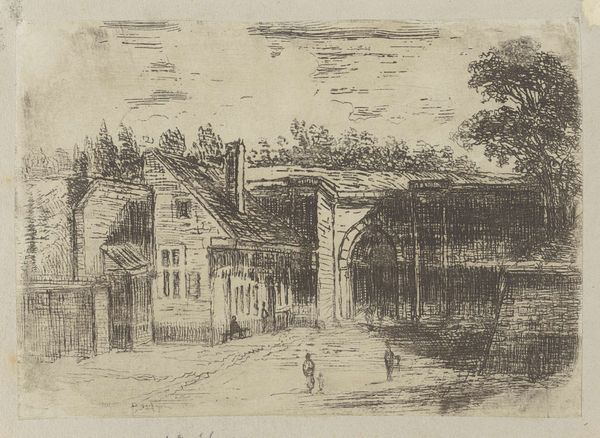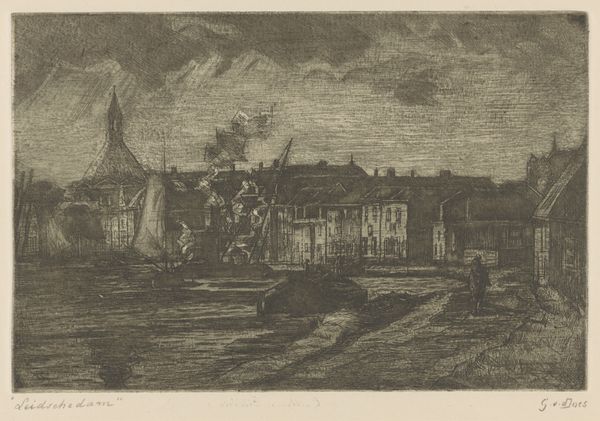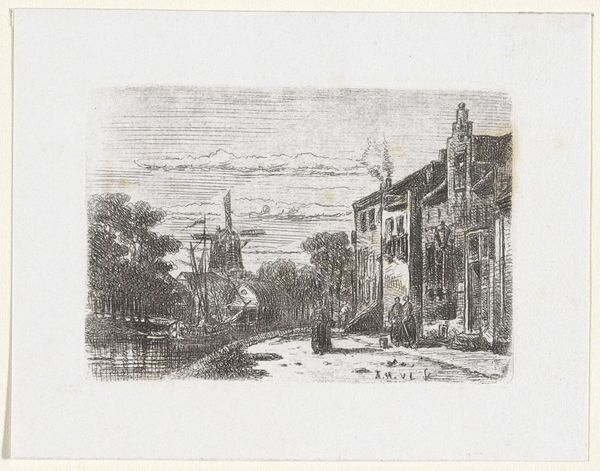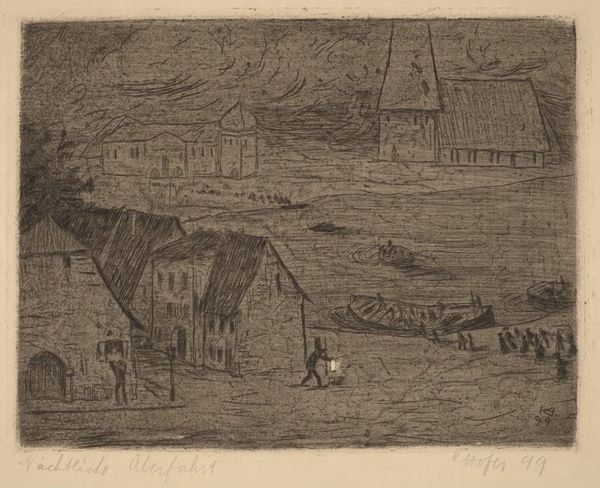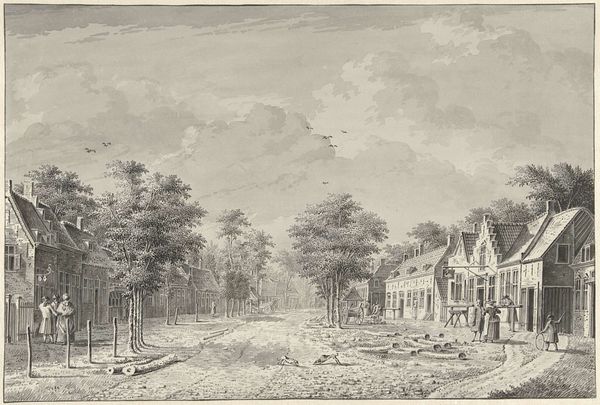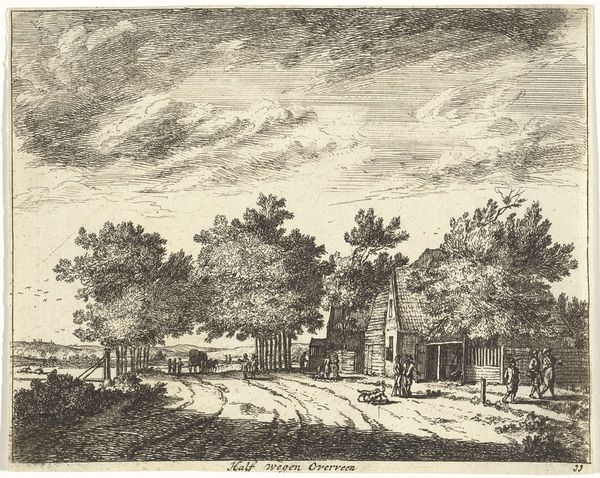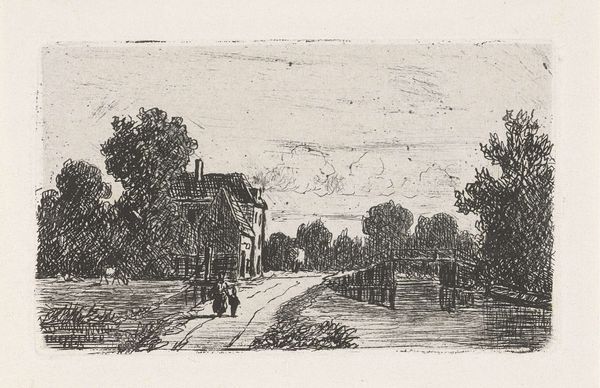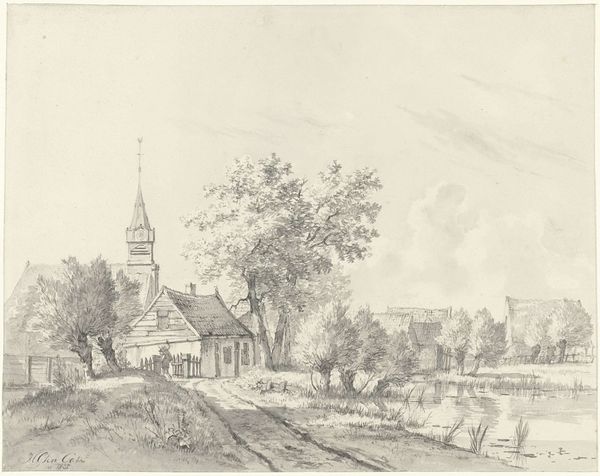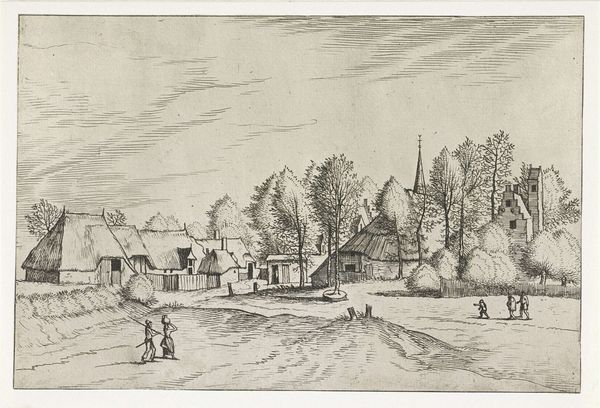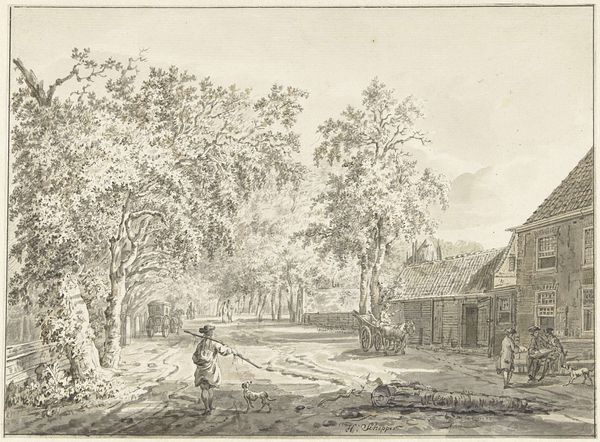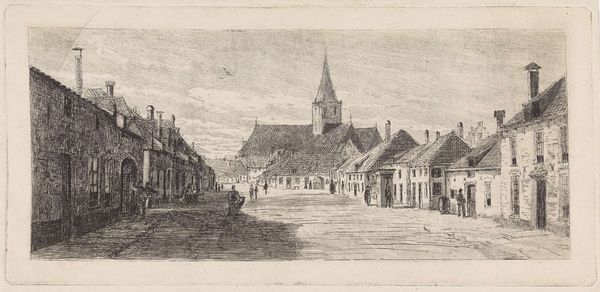
drawing, etching, ink, pen
#
drawing
#
pen sketch
#
etching
#
pencil sketch
#
landscape
#
etching
#
ink
#
pen-ink sketch
#
pen
#
genre-painting
Dimensions: height 125 mm, width 143 mm
Copyright: Rijks Museum: Open Domain
Editor: This is "Vrouw in een dorpsstraat," or "Woman in a Village Street," created in 1857 by Gijsbertus Johannes Verspuy, using pen and ink. It has such a delicate, almost ephemeral quality. What catches your eye? Curator: The etching process itself is what intrigues me most here. Consider the labour involved – the meticulous scratching of the image onto the metal plate. This isn't some grand oil painting meant to hang in a palace. It's an intimately scaled, reproducible image, part of a larger print culture. Think about who would have had access to this, the economics of its creation and consumption. Editor: So, it’s not just about the depiction of the village street, but also about how that depiction was made accessible? Curator: Exactly. The artist's choice of etching, a method allowing for multiple impressions, democratizes the image, shifting it from the realm of unique, precious objects. How does this method affect the social context compared to traditional painting practices? It also creates a shift in labour and artisanal expertise versus art for consumption, isn’t it? Editor: It makes me wonder about the intended audience, who was the artist trying to reach. Curator: And how did the means of production - etching - impact Verspuy's style and subject matter? The linear precision afforded by the technique perhaps pushed him towards these serene, everyday scenes. Notice how the details of the houses are created using only simple lines to denote structure. Also, who exactly profits from this distributed kind of visual information? Editor: That's a great point. I never considered the economics of etching in that way. Curator: Precisely! By focusing on the materiality and process, we uncover so much more about its place in society and who benefited, than just looking at its aesthetic value. Editor: Thank you for sharing this materialist approach with me. I'll never look at etchings the same way again!
Comments
No comments
Be the first to comment and join the conversation on the ultimate creative platform.
